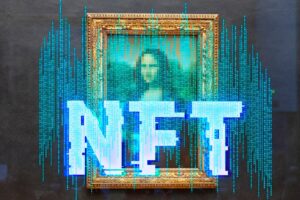The conventional art realm operates within a sphere where value is imperative, especially as every interaction—be it appraisals, legal evaluations, or freeport placements—invokes significant transaction fees and costs. High transaction costs dictate that traditional art must possess substantial value to act as a viable asset.
Consider Masterworks, a shared ownership platform, which securitizes the works of a mere 70 artists out of the 24,000 analyzed, focusing on renowned names like Basquiat, Picasso, and Banksy. This selective approach deems lower-value works as simple expenditures, analogous to renting instead of purchasing a home.
However, the advent of Non-Fungible Tokens (NFTs)—unique digital records on the blockchain representing ownership of unique items, usually digital artworks—challenges this traditional framework. NFTs provide exclusive ownership rights to digital items, much like owning a photographic print, such as the $4.3M Gursky photograph. Despite the spotlight predominantly focusing on high-valued NFTs, like Pak’s Merge sold for $92 million in 2021, NFTs are revolutionary due to their accessible nature and the facilitation of swift, cost-effective transactions through modern technology.

The surge in NFT demand has ignited a creative renaissance, and decentralized financial tools are democratizing art collection, forging a more inclusive and affordable art market. This shift, prompted by blockchain technology, represents one of the most revolutionary changes in the art and finance landscapes, enabling ordinary consumers to experience art collection endeavors traditionally reserved for the affluent, thereby redefining the artistic value paradigm.



